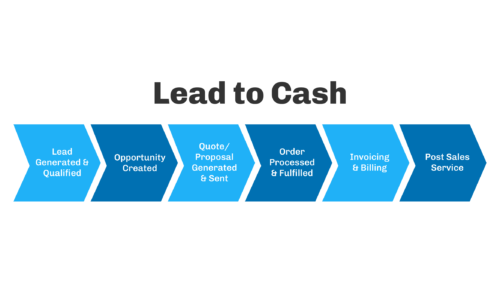“No problem is so formidable that you can’t walk away from it.”
–Charles Schultz

“Insanity: doing the same thing over and over again and expecting different results.”
–Albert Einstein
It’s a giddy feeling when you first start out your own business . There’s so much expectation, hope, and anticipation that you can barely wait to get started. You blast through 15 and 18 hour days like it’s nothing because there’s usually so much to do (or so much you think you need to do) and you go to bed excited and can hardly sleep because you just can’t wait to get back up in the morning and get at it again.
At some point, in some instances, you start to notice, after a while, that something just isn’t right. You’re hustling. You’re working hard. You’re gripping and grinning. You’re networking. You’re coming up with great ideas.
But, there’s one little problem.
There isn’t enough money coming in the door (if any at all) to pay for your expenses. Your ship is slowly listing as it’s sprung a leak.
I know this feeling. I’ve been there. Three times. I’ve had three different ventures which I started and eventually had to wrap up.
There are two things which Monkey Brain hates in this scenario: numbers and admitting failure. You’d think that the numbers would be pretty irrefutable. Money in is less than money out. Unsustainable, right? Not according to Monkey Brain. He’ll tell you anything to distract you from the cold, harsh reality which your bank account sends you every month.
MONKEY BRAIN: “LOOK! UNICORN BEING RIDDEN BY JACKALOPE WEARING BACON ARMOR!”
YOU: “Ooh! Where?!?”
The other aspect which Monkey Brain doesn’t like is failure. He’s never wrong, after all, so stopping the business would be an admission of failure. Monkey Brain will tell you all sorts of things about why you should fear failing. He’ll tell you that it’ll be an embarrassment, that your friends will view you as a failure, that your identity is completely tied into the business you created, and that you’ll never, ever, ever be able to start a business again. He’ll remind you of horror stories of terrible bosses and convince you that working in a job with an employer will cause brain damage.
You listen. You listen because you don’t want to give up. You had all sorts of dreams for this baby, this little venture of yours, and like the scrappy little garage band that became the next One Direction, you want to make your little small venture a wild success.
It’s an emotionally tough place to be in. You’re emotionally invested in your small business. You probably started it because you had some sort of passion for it. Passion doesn’t occur without emotion, and so you intertwine your persona into your business, particularly if it has your name in it. Widgets, Inc. isn’t nearly an enveloping to you as Bob’s Widgets, Inc., especially if your name is Bob. Now, faced with the possibility of the end of the existence of this enterprise, you’re facing fear and mourning.
Here’s the common trap that I see people in this situation fall into.
I know I’m about to turn the corner. I have this lead and that lead and the other lead and just one of them has to come in, and BOOM! Money! Then we’ll be off to the races.
That might be true. Or it might be delusional.
The best approach is to have an exit plan in mind before you even start.
Here’s what you should have nailed down in advance of even starting your business, and certainly if you’re just treading water or, worse, about to go under:
- From this point right now, how much are you willing to invest in your business? People get caught up in the “just a little bit more” syndrome and before they know it, they’ve spent thousands, tens of thousands, or hundred of millions of dollars (OK, maybe only if you’re Donald Trump) with no end in sight. Starting from now, answer how much more you’re willing to spend before you call it a day.
- Working backwards from revenues needed, figure out what the sales funnel needs to look like.The sales funnel is pretty simple. It’s
- Awareness: someone realizes that there’s a need or a problem
- Interest: that person finds a group of products or services which can address the need
- Desire: the person gains affinity with a particular product or service
- Action: Buy, buy, buy!
There’s not one to one linearity from the top of the funnel to the bottom (hence the term sales funnel). So, to get one sale, you might need to get 100 people aware of what you do. To break even and not go broke, you might need 10 sales a week. So, you’ll have to reach 1,000 people a week. Go get ‘em, tiger.
- Metrics and expected dates for success. It doesn’t help to say that you need 100 people aware of what you do if you don’t set a time limit. Monkey Brain can lay in a hammock all day and tell you that you’ll eventually get 100 people. It’ll come soon. You have to set timelines. Metrics will look like: “I need to have 8 paying clients 30 days from now” or “I need to have 100 new e-mail subscribers by April 15.”
- Periodic check ins on your progress. If you’re nowhere near meeting your goals and don’t see a path to improving on them by the time the deadline comes around, why keep chasing a lost cause? If you give yourself six months for your business to succeed, but, three months in, think it will be at least six more months before you even know if you’re going to have a chance of succeeding, why not acknowledge the remote odds and look for something else? It’ll save you money, and in the long run, it’ll save your psyche too. Otherwise, you’ll wait another six months, and at the end of the nine month period, you’ll say to yourself “I knew I should have quit six months ago! Argh!”
Knowing when to walk away is difficult, particularly if you’re just winging it in your business without some sort of game plan (and, no, I don’t mean a 50 page formal business plan document). You need to have triggers and break points where you decide if you haven’t reached a certain level of success in your business, you’re going to stop.
By having these breakpoints set ahead of time, you can also remove emotions from the equation. The decision to walk away is the most difficult when you not only have to fight the numbers, but you also have to fight Monkey Brain.
If you walk away while you can, life goes on. Life goes on if you don’t, but it will certainly be much more difficult than if you had kept your assets instead of chasing lost causes. As the cliché goes, planning to fail is better than failing to plan.
Have you stuck with an entrepreneurial venture too long? What happened? What would you change? Tell us about it in the comments below!
Around a year ago, I wrote about understanding what your priorities in life are. If you haven’t read it, go check it out!
Author Profile
- John Davis is a nationally recognized expert on credit reporting, credit scoring, and identity theft. He has written four books about his expertise in the field and has been featured extensively in numerous media outlets such as The Wall Street Journal, The Washington Post, CNN, CBS News, CNBC, Fox Business, and many more. With over 20 years of experience helping consumers understand their credit and identity protection rights, John is passionate about empowering people to take control of their finances. He works with financial institutions to develop consumer-friendly policies that promote financial literacy and responsible borrowing habits.
Latest entries
 Low Income GrantsSeptember 25, 2023How to Get a Free Government Phone: A Step-by-Step Guide
Low Income GrantsSeptember 25, 2023How to Get a Free Government Phone: A Step-by-Step Guide Low Income GrantsSeptember 25, 2023Dental Charities That Help With Dental Costs
Low Income GrantsSeptember 25, 2023Dental Charities That Help With Dental Costs Low Income GrantsSeptember 25, 2023Low-Cost Hearing Aids for Seniors: A Comprehensive Guide
Low Income GrantsSeptember 25, 2023Low-Cost Hearing Aids for Seniors: A Comprehensive Guide Low Income GrantsSeptember 25, 2023Second Chance Apartments that Accept Evictions: A Comprehensive Guide
Low Income GrantsSeptember 25, 2023Second Chance Apartments that Accept Evictions: A Comprehensive Guide

